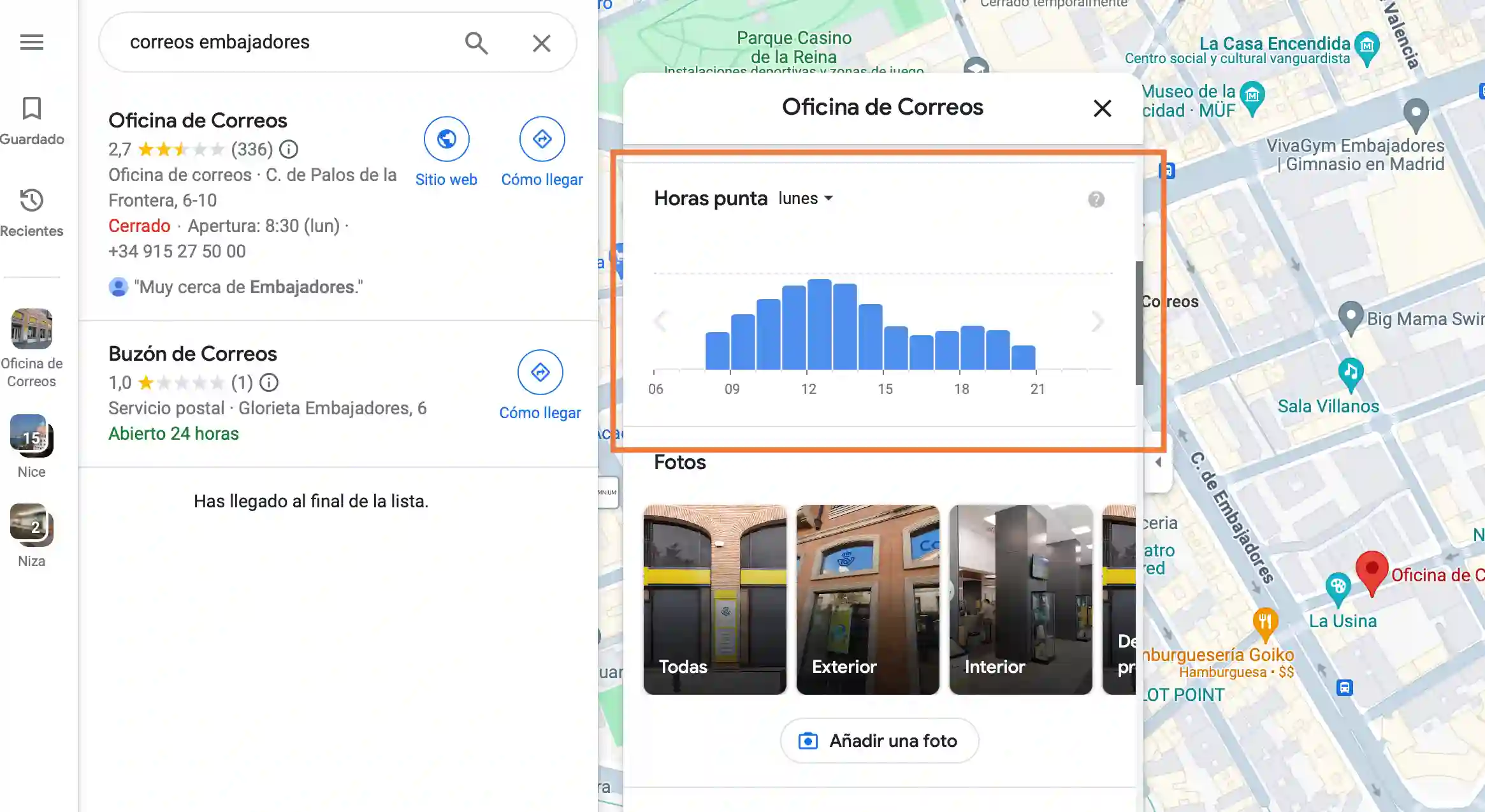
Google Maps has a very interesting feature that shows you the average crowd level at a particular establishment depending on the time, and also tells you if at a specific moment there are more or fewer people than usual.
This is a feature that is not very well known, but it will help you know the best time to go to the post office—which is usually very busy—the supermarket, or any other place you’re interested in.
By knowing approximately how many people are there at that moment, and whether it’s more or less than average, you can determine the best time to go and try to avoid long lines.
How to know the best time to go somewhere thanks to Google Maps
What you need to do to find out when it’s best to go to your favorite supermarket or a post office is follow these steps:
-Open the Google Maps app (or access it from your computer) and search for the place or establishment where you want to see crowd level information.
-Tap on it and open its information card. Then, go to the “Popular times” section and you’ll be able to see the hours with the average crowd level throughout the day.

In the same way, real-time information will also be shown, and you’ll even see the average time people usually spend at that place. You can also view data from other days of the week. This way, you can decide when it’s best to go to avoid waiting too long and thus avoid unnecessary lines.
How Google gets crowd and “peak hour” information for a place
You’re probably wondering how Google Maps gets the data to know the average crowd at a place and, especially, the crowd at any given moment.
Remember that in that place there will likely be many people carrying their mobile phones, and most of them are probably Android phones.
Google collects this information—anonymously, without knowing who each person is by name—and, in aggregate, it allows them to know approximately how many people are in that place at a specific time.
By comparing all the collected information, it can determine the average numbers and whether at a given moment there are more or fewer people compared to the average.